Digging It
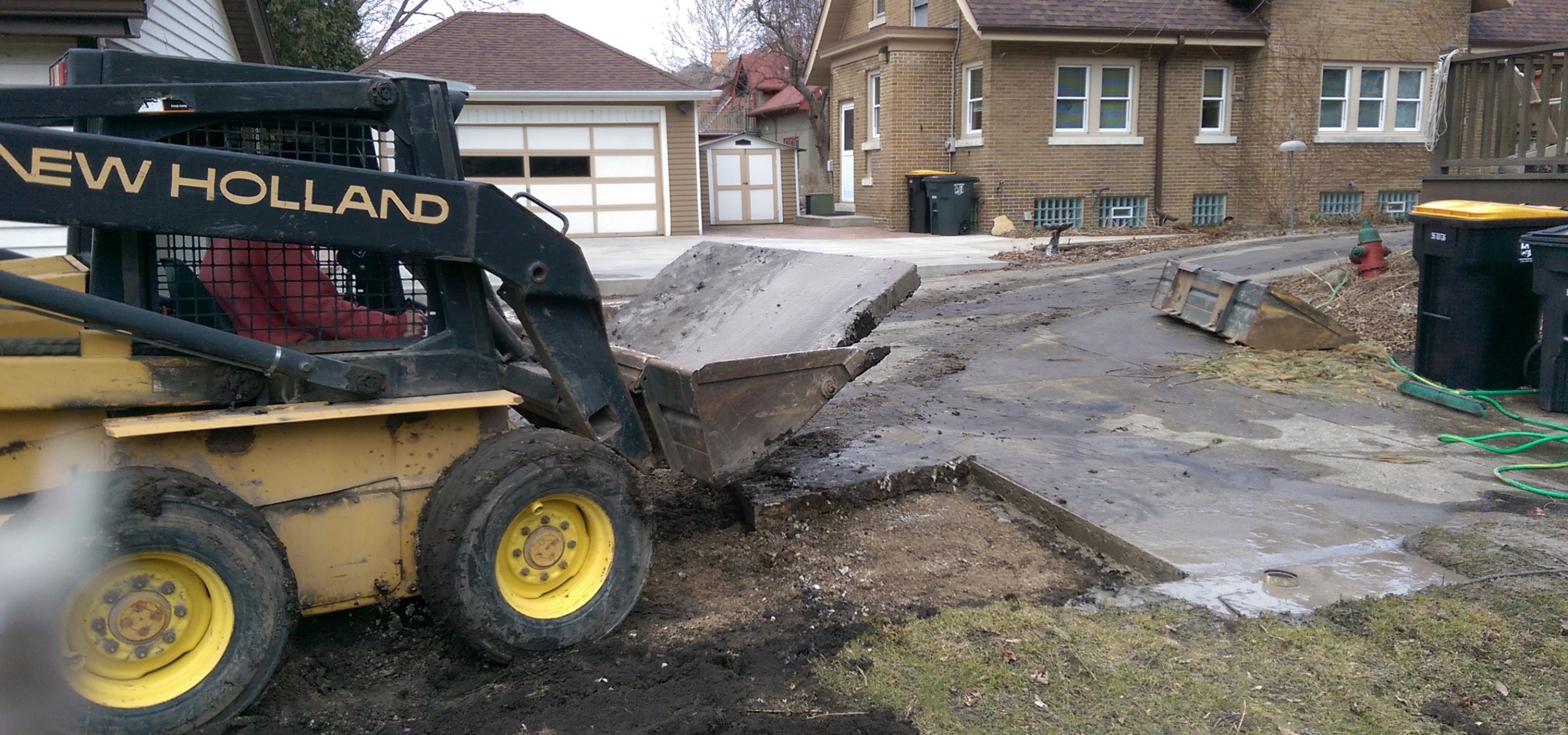
We’ve lived in our house nearly fifteen years, which is the exact amount of time that I’ve wanted to make our driveway smaller and my garden larger. Previous owners expanded the driveway to make for better basketball, something my sons appreciated when we first arrived. But given that the driveway is in the sunniest portion of our Wisconsin yard, through the years I’ve been slowly encroaching on that space with an expanding array of planters.
But we’ve had this other little problem of standing water. I’ve grown used to it, but in reality the standing water that accumulates on this section of the driveway is both a nuisance and a danger. Water a few inches deep soaks our shoes avoid after a small rainstorm. During one extreme rain event the entire back yard flooded to the point where my sons were able to paddle the canoe! But in late winter when snow thaws during the day and re-freezes at night, this section of the driveway is a true hazard.
As part of some larger landscaping plans, last year we came to a family agreement about concrete removal. The basketball net has been gone for a few years, and we all agreed that more garden is the way to go.
So yesterday morning, on a tip from a friend of mine who removed a much larger area of cement from her Milwaukee home-based business last year, I called Dennis Pinter to see if he could help me out. After describing the project to him, and answering his many questions, I asked “So, when do you think you could come out to do this?”
His answer: “I can be there in about an hour.” What? And if that weren’t good enough, he added “Could you use a load of compost? I have ten yards of compost loaded onto my truck that I could sell you.”
So, I wrapped up the work I was in the middle of, and prepared for his arrival. I’ve seen my share of rain gardens, and even helped install a few, but this was my first experience at concrete removal. As it turned out, Dennis’ fast turn-around wasn’t the only surprise of the day. Here’s a photo recap:

Next, Dennis unloads his bobcat and connects the hose to his concrete saw. The area of concrete just beyond him is what will be removed.
The discovery of a drain pipe adds a new twist to the next steps of our work. I’m curious to talk with our neighbor who has lived here long enough to remember the days before that drain was covered. But more importantly I need to figure out what to do with it! My goal of improving groundwater recharge and reducing stormwater runoff won’t get too far if I have a straight pipe to the sewer system. Yikes!


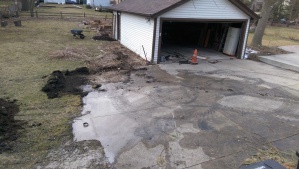
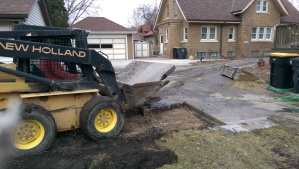

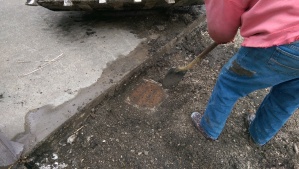
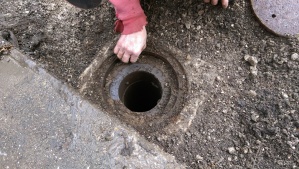
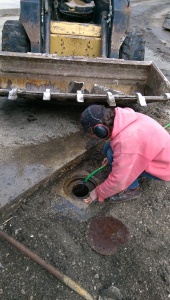

He does make quick work of things! Surprise what you find under the concrete!
LikeLike
thank goodness it’s just a drain pipe…for a minute I thought this story was going to end with either “jimmy Hoffa” or “Al Capone’s vault.”.
LikeLike
Great adventure and discovery.
LikeLike
The suspense…. can’t wait to learn origin of your mystery pipe. (and see photos of new plantings!)
LikeLike
Today I was able to talk with someone from the city engineering office, who also consulted with the plumbing inspector. It’s possible that it’s connected to the sanitary sewer, or that it could be an old cistern connection (not all that likely, I think) OR that it could drain into a gravel bed to help with drainage. Those are pretty big differences. Bottom line – the engineers are curious and want me to let them know what I figure out, The adventure continues. At this point it’s no longer just curiosity; the answer makes a big difference in how we handle the pipe (fill it up vs integrate it into our planning to help with infiltration).
LikeLike
The suspense is killing me. What have you found out?
LikeLike
Steve – sorry to take so long to reply. The answer is “Basically, nothing.” Talked to the city’s engineering dept, but they didn’t know what it was. Later we got some major rains which quickly filled the basin and proved to me that the pipe no longer drains. I presume it originally connected to either storm or sanitary sewer (city didn’t know which), but some time in the last 90 years the pipes collapsed or filled in. So, I don’t know the origin but I have the answer I need. I can move forward with rain garden plans, without worrying about the pipe and where it goes.
LikeLike